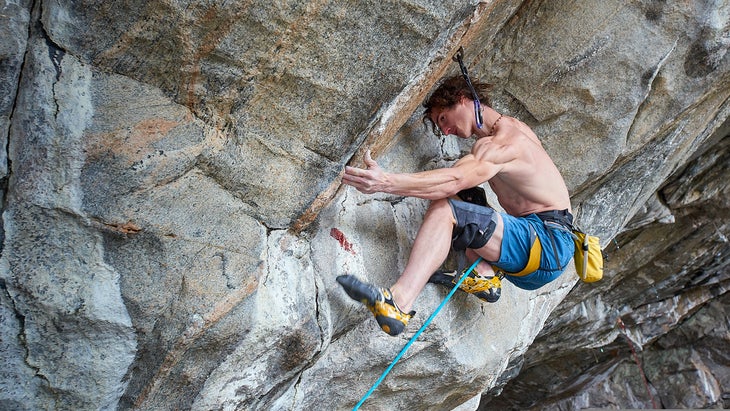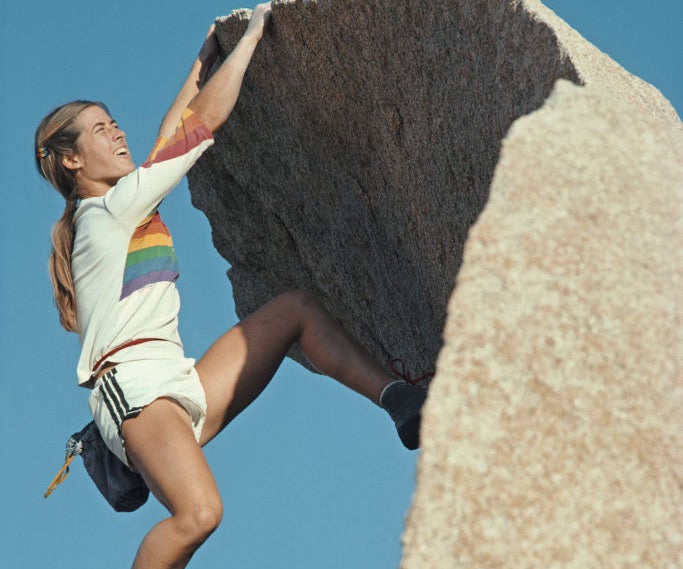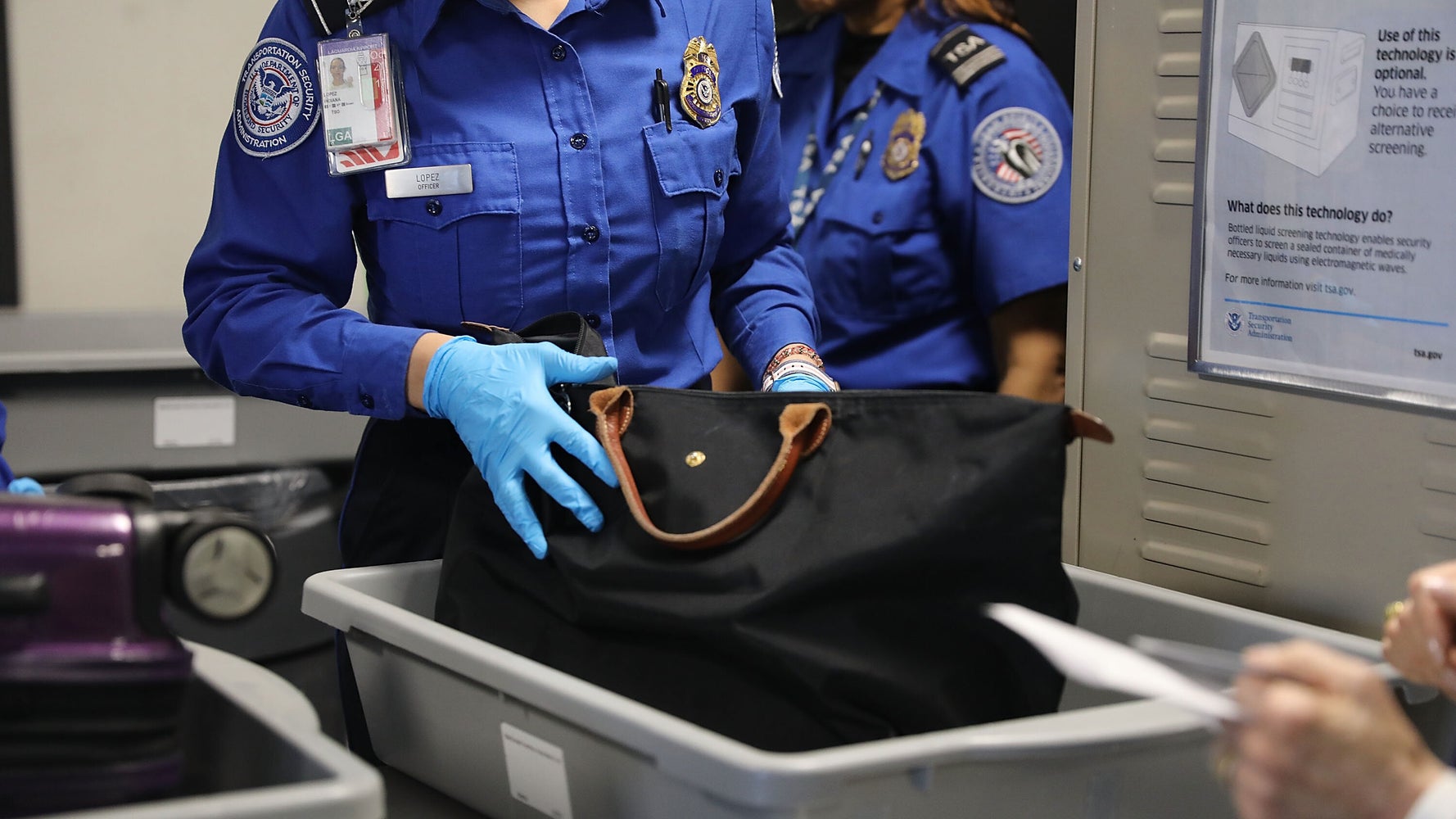
On April 8, just a day before her 24th birthday, American rock climber Brooke Raboutou made history by climbing one of the hardest routes in the world.
Called Excalibur, the 40-foot route in Northern Italy is steep and notorious for its difficulty. Over the years this pitch has defied some of rock climbing’s strongest athletes. But Raboutou’s climb wasn’t just a big deal because the route was hard. Within the world of rock climbing, Excalibur is graded 9b+/5.15c. Raboutou has now become the first woman, ever, to ascend a climb at that grade.
“From the start, I was drawn to you,” Raboutou wrote on Instagram. “Some days felt like effortless harmony; on others, we fought, our voices raised … You forced me to confront my fears, detach from expectation, and feed every flicker of belief I could find. You taught me to argue with doubt until it began to doubt itself. You asked for everything, but gave me even more in return.”
Here’s what to know about her historic feat:
Who Is Brooke Raboutou?
Raboutou hails from climbing royalty. Her parents, French climber Didier Raboutou and American Robyn Erbesfield, were both world champion competitive climbers. Her older brother, Shawn, is one of the world’s strongest boulderers—a subset of climbing focused on short, powerful moves close to the ground.
With her superhuman family, Brooke Raboutou has been making waves in the world of hard climbing since she was a child. She climbed a boulder graded V10 when she was just nine years old, and at age ten and then 11, became the youngest women to climb routes graded 5.13d and 5.14b, respectively. Long story short: Even before she hit high school, Raboutou was stronger than 99 percent of climbers on the planet.
Raboutou has also had an illustrious competitive career. She attended both the 2020 Tokyo Olympics and the 2024 Paris Olympics. In Paris, she earned a silver medal, becoming the first American woman to medal in Olympic sport climbing. I interviewed Brooke right before her Olympic success.
What Does the Grade 5.15c Mean?

In the United States, roped rock climbs are graded on a scale called the Yosemite Decimal System (YDS), which used to run from 5.0 to 5.10, with the latter rating reserved for the toughest routes. In recent decades, as climbs have become harder, new levels (5.11, 5.12, etc.) have been introduced, with letters (a, b, c, d) tacked onto the end of the number to denote different arrays of difficulty within each number grade.
Today, 5.15c is the second-highest grade thus far. The first-ever 5.15c was ascended by Czech climber Adam Ondra 2012—the route, called Change, is in a cave in Flatanger, Norway. In the 13 years since then, only ten people (Raboutou included) have climbed routes at that grade. Less than a dozen routes graded 5.15c exist in the world.
But not all 5.15 routes are alike—the rating does not specify a rock’s angle or hold-size. Some 5.15c routes, like Excalibur, are short and steep, and require a climber to pinch microscopic holds up an essentially blank wall. Others 5.15c routes, like La Dura Dura in Spain, are four times as long, but require a climber to perform dynamic movements and diverse techniques to get to the top—a climbing style that favorites endurance over raw power.
One higher level (5.15d) technically exists, but there are only three routes in the world that have been proposed to be that grade, and none has been repeated. This is noteworthy because climbing routes receive their grades by consensus. For example: if I am the first person to climb a route, I will tell everyone how hard I think it is, but then other climbers who climb the same route will chime in with their respective opinions, and so-on. As time goes on, a general opinion within the climbing community emerges about the route’s grade. Perhaps my initial grading wasn’t entirely accurate—the climbers who repeat my route will set the story straight.
Of course, this means that assigning grades to the hardest routes is difficult, since only the very best climbers can complete them and then offer their respective opinions. The fewer climbers who are actually able to climb a route, the more weight each individual opinion carries. For routes like Excalibur, which are among hardest in the world, this number is slim. Only two other climbers—Stefano Ghisolf and Will Bosi—have been able to complete the route.
So, while 5.15c is technically the second-hardest grade in the world, it’s the hardest grade that multiple climbers have been able to complete and then verify.
What Do We Know About Excalibur?
I’ve reported on Excalibur since it was first climbed by Ghisolfi, who hails from the town Arco where the route is located, in 2023. The route—which is named for a sculpture of a sword-in-an-anvil placed near its base—is shorter than most other 5.15c climbs. However, it is steeper, and as a result, each move is individually harder.
The wall Excalibur ascends is overhanging at an angle of 40 degrees. Imagine climbing up a pyramid, but from the inside. The route is only 40 feet long and entails approximately 18 individual movements. To the layperson, this wall would appear essentially blank and completely devoid of hand or footholds. In truth, there are holds, but they are scarcely bigger than the cracks in the surface of a brick wall. Climbers have ascended Excalibur using tiny pinches and “crimps”—credit card-like edges in the rock that are sometimes only a few millimeters deep—and shallow pockets, which can be grabbed using only a couple of fingers.
To get an idea of what Excalibur entails, I suggest watching the YouTube video of Ghisolfi making the first ascent.
In outdoor climbing, Raboutou has specialized in bouldering, like her brother Shawn, which also makes her ascent of Excalibur noteworthy. She has never climbed a route in the 5.15 zone, so her jump to a 5.15c is extremely impressive. Excalibur, although it is a roped climb, is right up Raboutou’s alley.
Where Excalibur Places Brooke Raboutou in Climbing History

In 1993, American climber Lynn Hill made the first free ascent of The Nose on El Capitan in Yosemite. This 3,300-foot route, graded 5.14a, is the world’s most famous rock climb. Prior to Hill, it had never been climbed by anyone, male or female, without using artificial aids to get around some of the more difficult, blank sections.
Throughout much of rock climbing’s early decades, the sport was male-dominated. In recent years, that has changed. In 2024, Austrian climber Barbara “Babsi” Zangerl became the first person to “flash” a route on El Capitan—this means she climbed the route on her first try, without a single fall.
The first woman to ascend a route rated 5.15 was American Margo Hayes, who scaled a 5.15a route in Spain called La Rambla in 2017. The same year, Austrian climber Angela “Angy” Eiter became the first woman to climb 5.15b by ascending a route in Spain called La Planta de Shiva.
In the eight years since then, other women have climbed routes graded 5.15a and 5.15b, but none have completed a 5.15c. With her Olympic medal last year, Raboutou proved herself one of the world’s leading indoor climbers. With Excalibur, she now stands at the pinnacle of outdoor climbing as well.
The post American Climber Brooke Raboutou Just Made History. Here’s What to Know. appeared first on Outside Online.















